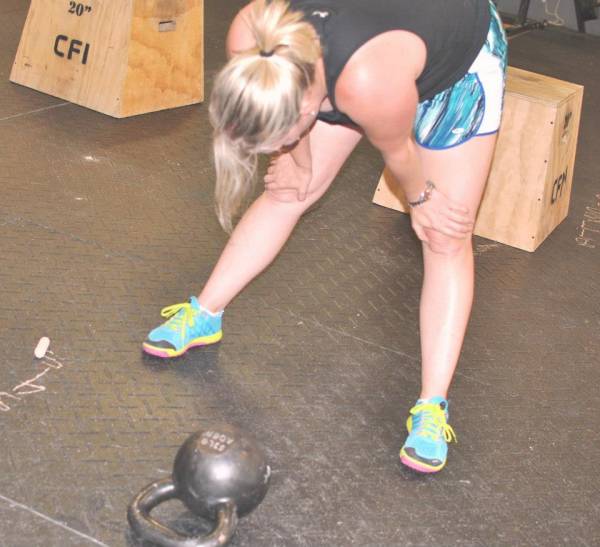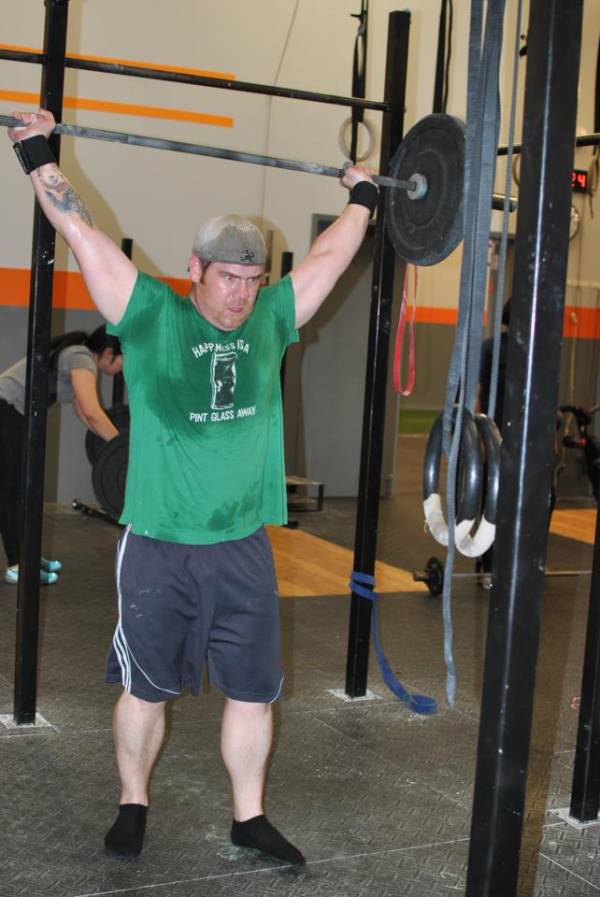Today you can find two types of CrossFit. One is that awesome exercise routine we all fell in love with that consists of functional movements done at high intensity for the betterment of our health. The other is the sport of CrossFit. Just like what you see on ESPN, CrossFit the sport continues to grow every day.
With this growth in popularity, more athletes are coming into the mix and wanting to compete at high levels. They arise from all walks of life, ranging from the former college football player to the ultra-marathon runner, and they all have one thing in common – they lack patience.
These athletes feel that because they found success in their former endeavors, they will automatically find success in CrossFit. They are wrong. Yes, the potential for success is there, and as coaches we all drool over what can be for certain people. But there is a process to getting better. For example, you cannot just pick up a baseball and in one year become a pitcher for the Major League. Talent can only take you so far. Just like anything else, you have to develop the little things first. Then, with a little bit of luck and tons of determination, you just might accomplish your goals, whatever they may be.
Respect the Process
As a strength and conditioning coach, I make one thing clear to my athletes: you have to respect the process. There is a progression for everything, and if true results are going to be achieved, then hard work and dedication are required. In the gymnastics of CrossFit, you must have the strict movements down first. A stable base and lots of core stability must be developed before higher-skilled movements can be performed. If this is not developed, catastrophic injuries can occur, yet I’ve witnessed athletes try movements well beyond their means anyway.
Sometimes doing a movement improperly over and over again is not intelligent because, well, you just can’t do it. Athletes sometimes just need to go back to the drawing board in order to develop that movement. This can mean additional months of strength and skill development, but people hate doing that. They want a coach to find a quicker solution. I hate to break it to you, but sometimes there are no magic coaching words or adjustments that are going to make you better. Why? Because you just can’t do it. You are not strong enough or technically proficient, at least for now. It is important to understand that although you have the potential, there is a learning curve to anything.
If you have an that athlete is truly willing to work at accomplishing his or her goals, or you are this athlete, then it is important to have a few tips:
Tip #1: Listen to Your Body
 Don’t get caught up in the three-day-on-one-day-off attitude. This is the work-rest day ratio CrossFit created when the program began and people tend read too much into it. If your body is telling you to stop, then listen.
Don’t get caught up in the three-day-on-one-day-off attitude. This is the work-rest day ratio CrossFit created when the program began and people tend read too much into it. If your body is telling you to stop, then listen.
Competing in CrossFit requires you to be strong. In my opinion, the basis of a solid program will always be strength. This is in regards to both weightlifting and gymnastics. If you work on building a stronger you in all domains, then the rest will fall into place. Once a sound strength base has been established, then it is important to work on mastering more advanced skills. But in order to get strong you can’t get caught up in lifting all the time and doing every workout in sight in pursuit of getting better. You must understand that to build strength, you must rest.
The body repairs and strengthens in the time between workouts. Continuous training can actually weaken the strongest athletes. Recovery days are the only way possible to restore muscle tissue breakdown to make you stronger. It is okay to take two days off. It is okay to only workout one day and need a rest day the next. You should never be in perpetual soreness. Listening to your body is crucial.
Tip #2: Let Injuries Heal
Tweaks and injuries are a part of competing in any sport. It is inevitable as intensity rises. With the amount of training a competitive CrossFitter does, it is easy to tweak something or have old injuries flare up. It is beyond important to stay healthy, not only to live a full life, but particularly when preparing for a competition. You have to let small injuries get better or they can lead to large ones. And the longer you ignore injuries, the longer it will take for them to heal. Don’t be too proud to scale or change a movement that may reactivate an injury and elongate the healing process. You are in this for the long haul and it is important to see the big picture, as opposed to being a badass for one day. Think, “I want to work smarter, not harder.”
Tip #3: Understand Volume
Understand the volume you’re doing on a daily and weekly basis. Especially in regards to the amount of repetitions you’re doing of a given movement, the amount of load you are stressing your skeletal system with, and the movement combinations that you are hitting. Make sure you have a plan and it is understood by you and your coach.
Do not just trust the programming at your box because you assume all CrossFit is created equal – it’s not. As random as it may seem quality boxes and coaches have plans in place. These coaches pay attention to the volume of training that their athletes put forth. But it is also important for you to understand how this volume affects you. You have to know how your body reacts to high-rep squat workouts, high-rep pressing workouts, running, rowing, gymnastics, etc. If you do 300 double unders on a Monday, does it really make sense to do fifty box jumps on a Tuesday? What are the risks? What are the benefits?
 Keep a log. Start to understand how you feel after a ton of shoulder and leg movements. Do the math. If you hit a three-round, five-rep workout of clean and jerks at 205lbs, and then decide to hit thirty reps of snatches at 135lbs the following day, then you are totaling 3,075lbs of load one day and 4,050lbs the next. Yes, the weight is lighter on day two, but you just loaded almost 1,000lbs more than the day before, and with virtually the same movement. Depending on the person, this can place significant stress on the body and possibly lead to an overuse injury or serious neuromuscular fatigue. Neuromuscular fatigue can last for several days and affect your workouts, leading to frustration for those with an upcoming benchmark or competition in which they want to do well.
Keep a log. Start to understand how you feel after a ton of shoulder and leg movements. Do the math. If you hit a three-round, five-rep workout of clean and jerks at 205lbs, and then decide to hit thirty reps of snatches at 135lbs the following day, then you are totaling 3,075lbs of load one day and 4,050lbs the next. Yes, the weight is lighter on day two, but you just loaded almost 1,000lbs more than the day before, and with virtually the same movement. Depending on the person, this can place significant stress on the body and possibly lead to an overuse injury or serious neuromuscular fatigue. Neuromuscular fatigue can last for several days and affect your workouts, leading to frustration for those with an upcoming benchmark or competition in which they want to do well.
Learn your thresholds. What kind of volume can your body handle and still perform at high levels? Some people need little recovery, while others require a lot. Once again, it is a listening game for you when it comes to your body, and communication is key between you and your coach.
Following these three general principles will help you get better at the sport of CrossFit, but it is important to understand the learning curve is different for everyone. It is not only about learning movements, but also about learning how your body reacts to them. In CrossFit, you have to be willing to crawl before you can walk. You can’t get caught up in the scoreboard or what others around you are doing. You must be willing to learn at all times, to take coaching advice, and to stick to consistent programming.
The landscape of CrossFit competition training has become much more sport specific. Just like in any sport, you must now do things in training that will make you better at that exact sport. Understand that as you undergo the stress of physical exercise, your body will adapt and become more efficient. Once you adapt to a given stress, you will require additional stress to continue to make progress. The only way to adapt to this stress is practice, repetition, and rest. In the gym is where you train, and in the arena is where you put forth in competition what you did in training.
For those of you who want to compete in CrossFit, work on your development. If you let the developmental progressions take their course in all things specifically related to CrossFit, you will get better. Sometimes we all just need to stop and enjoy what it means to improve. Do not put pressure on yourself or think it has to happen now. Have fun. Never forget this. This is why you love CrossFit. It is why you choose to compete in it. Put a smile on your face and work diligently towards your goals. If you do this, then you will find yourself in a satisfying place.
Photos courtesy of CrossFit Impulse.






